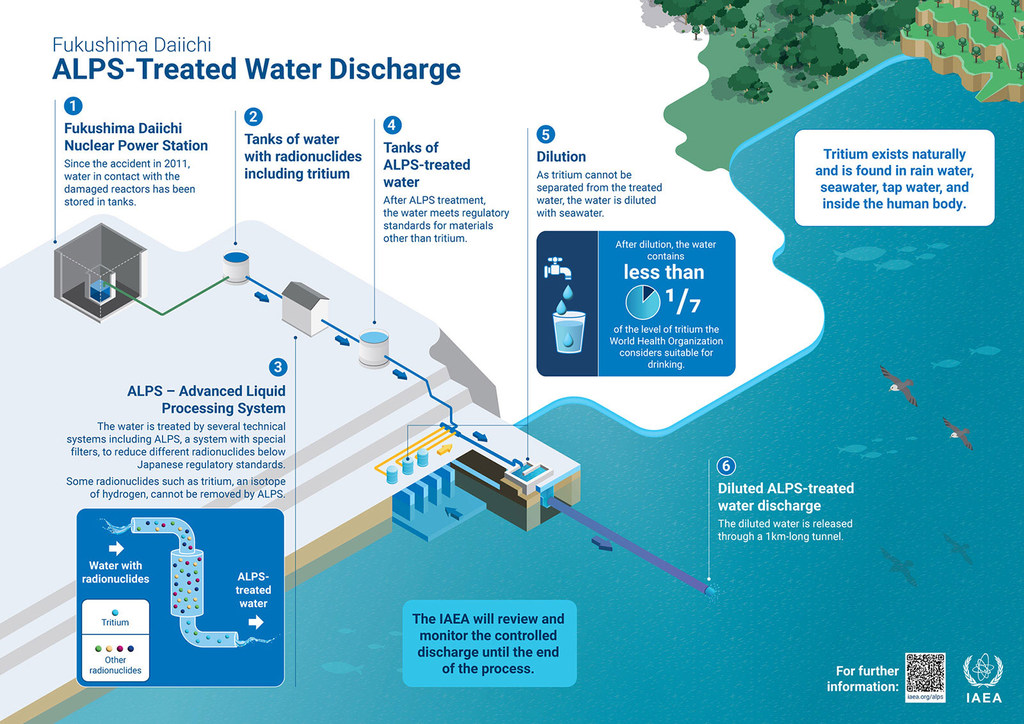Japan has officially commenced the discharge of treated radioactive wastewater from the damaged Fukushima Daiichi Nuclear Power Plant into the Pacific Ocean. This significant decision comes years after the devastating earthquake and tsunami in 2011 resulted in a nuclear meltdown at the plant, releasing radioactive materials.
The discharged water has undergone an extensive treatment process to remove the majority of radioactive contaminants, but it’s important to note that some tritium, a radioactive isotope of hydrogen, remains in the water. The treated water has been stored in tanks on the Fukushima plant’s premises for an extended period.
The key drivers behind this decision include the need to free up storage capacity on the plant site, as the volume of treated wastewater has continued to grow. Additionally, the process of nuclear decommissioning at Fukushima is well underway, and part of this process involves addressing the wastewater issue.
However, the decision has not been without controversy. Environmental concerns have been raised regarding the potential impact of the discharge on the Pacific Ocean’s ecosystem. Tritium, while considered less harmful in low concentrations, is still radioactive, and there are worries about its effects on marine life and coastal ecosystems.
Internationally, Japan’s decision has drawn attention and a range of reactions. Various nations and environmental organizations have expressed their views on the matter. Some have emphasized the importance of transparency and the need for ongoing monitoring and mitigation efforts.
To address these concerns, Japanese authorities have outlined strict limits on tritium concentrations in the discharged water. They have also committed to continuous environmental monitoring to assess the impact of the discharge and implement necessary measures to mitigate potential risks.
This decision is a significant step in the broader effort to manage the long-term recovery and decommissioning of the Fukushima Daiichi Nuclear Power Plant. It represents the intricate balance between managing the remnants of a nuclear disaster, dealing with storage limitations, and addressing concerns about environmental repercussions.
The successful execution of this plan will necessitate ongoing transparency and international collaboration, as well as stringent adherence to safety and environmental standards. Japan’s move to discharge the treated radioactive wastewater into the Pacific Ocean is a pivotal moment in the Fukushima Daiichi recovery process, with far-reaching implications for nuclear waste management and environmental protection.
